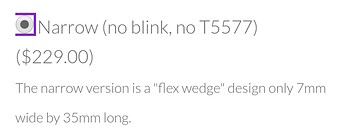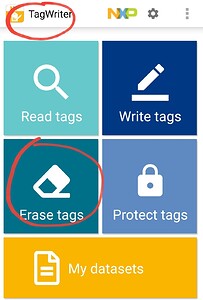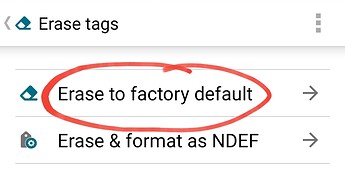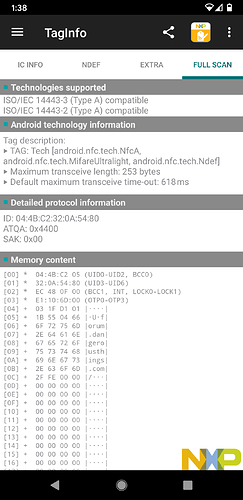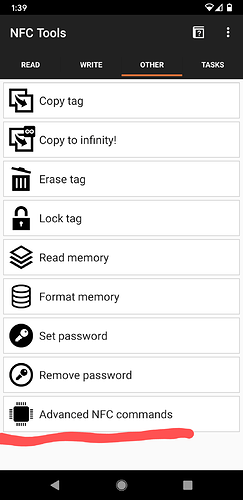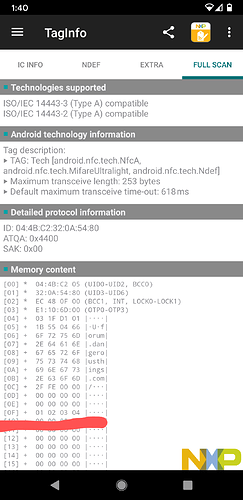Hi all! Thanks for checking in! 
Before I give my update, let me make it very clear to anyone who is interested in copying an amiibo to their xNT implant — DON’T!
Hopefully that inkling of foreshadow doesn’t spoil my story’s unfortunate ending. Either way, let’s begin!
Unfortunately, I lost contact with Connor after June. In August or so, I decided to get serious about finding a way to crack this myself. I got an actual NFC Reader/Writer (previously I was only using my Android), along with a dozen NTAG216 stickers and a dozen NTAG215 stickers. I stumbled onto this site: https://nfc.toys which was an initiative for hacking amiibos to do other things. Perfect.
Now, my memory is a bit foggy (it’s been about a year now), so I’ll try to paint the picture in broad strokes. I cloned my xNT implant to an NTAG216 sticker and used this for experimenting — I’ve learned my lesson in playing with a “production” environment, hehe. The creator of the NFC toys site has steps listed here for “hacking” an amiibo: Writing your own data to a Nintendo Amiibo NFC toy
One of the first instructions is to calculate a password that Nintendo uses to protect all the pages of an amiibo’s memory. I generated the password for a Resetti amiibo (the awesome character trapped on my hand), and attempted to write to a few pages that I saw had nothing but zeroes. But this didn’t work. Long story short, after hours of banging my head against the wall and cleaning off the blood, I discovered that even though these pages were showing as “password protected,” a password of an empty string allowed me to successfully write to these pages. Things got severely borked since amiibo was designed for NTAG215, while the xNT uses NTAG216. I’ve attached a screenshot of the very first glimmering hope of success I experienced — I wrote the defacto “Hello world” to my hand and was successfully able to read it in a memory dump. But, scanning it with an actual NFC app did not work.
These were written without types. If I recall correctly, the NFC protocol follows the “NFC Data Exchange Format” (NDEF), which has different types for the data represented. So now, when I scan my hand, those pages don’t appear with any kind of type. The “NFC Tools” app on my phone doesn’t show a row with that text. The only way I can see it is by dumping the memory, scrolling down to the random handful of pages I wrote to, and then decoding them from hexadecimal to ASCII. I can’t write my subway pass to it, nor my work badge, not even a simple “Hi, thank you for scanning my hand” message that could be readable using a standard NFC phone app. I’ve been thwarted. I tried my hardest to find a way to write a message and specify the type, but it was not possible. (I think the bit or bits set for the type were locked and therefore immutable.)
So where do I go from here? Well, in the next few months or so, once I get a break from uni, I’ll spend some time on coming up with a little project of my own that’ll operate based on the serial ID of my xNT. Nothing crazy like unlocking my front door, but more in tune with waving my hand to turn on/off my living room lights.
Do I regret any of this? Not at all. I spent days studying the NFC protocol, NDEF, and basic system architecture (pages & memory). I learned from this experience, and that’s more valuable than the $5 toy I would have had embedded on my hand.
Do I recommend anyone else do this? HELL NO. The emotional turmoil I went through in all of this was horrifying.
Learn from my mistake. Before you start experimenting with your new implant, do some research. Understand what’s actually going on “under the hood” — learn about the different types of NFC tags. And most importantly, experiment using tags that are outside your body. Had I just spent $5 on some NTAG216 stickers and tested with those beforehand, I really would have saved so much headache and even some heartache.
Hope that gives you all some closure. 


